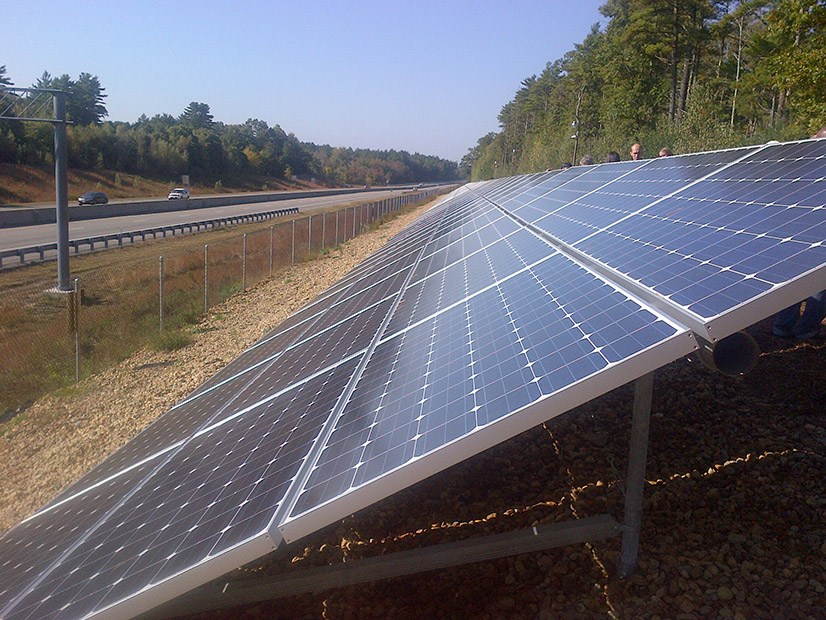
The Massachusetts Department of Transportation (MassDOT) has received $1.23 million in grant funding from the state to develop five solar projects, including a pilot to install solar panels on highway sound barrier walls in Lexington.
“It’s an opportunity to see if it’s a means to develop existing infrastructure and combine it with solar,” Donald Pettey, program manager with MassDOT, told NetZero Insider.
If the setup works, the panels will generate 800 MWh/year, Pettey said.
Solar panels will be mounted on 160 sound barrier wall sections along I-95. According to state officials, the pilot will be the first of its kind in the country.
The funding for pilot comes from the Massachusetts Department of Energy Resource’s Leading by Example program, which provides grants for state entities that help increase the installation of solar photovoltaic systems at state facilities, particularly solar canopies and innovative solar technologies.
“The efforts by the Leading by Example team, MassDOT and other state institutions have resulted in greater solar and EV adoption,” Gov. Charlie Baker said in a statement. The pilot project from MassDOT is assisting the state in its “efforts to meet ambitious net-zero emissions requirements set forth by legislation signed earlier this year.”
The section along I-95 in Lexington was selected for the pilot because the sound barrier was built recently and won’t require an upgrade during the solar project’s lifetime, Pettey said.
Wall sections for the project are also high up with little plant growth in front of them, and they receive a lot of sunlight.
“We don’t want to be cutting down any trees,” Pettey said.
Some conservation groups and farmers in Massachusetts oppose large-scale solar farms planned for forested lands, open space and agricultural fields, but Pettey said it has been cheaper to build ground-mounted solar installations on previously undeveloped land.
However, the state’s Solar Massachusetts Renewable Target incentive program is steering away from ground-mounted solar and providing more credits for projects in underutilized spaces that are already developed, like carports or highways.
With the costs of steel increasing, Pettey said some projects in the built environment would not be possible without grants from the state.
“The cost per watt to install solar canopies is still pretty high,” Pettey said.
Lexington is also a designated environmental justice community. About half of the town’s population falls under that category, according to state data. If effective, the project is a way to bring clean energy to the grid in a town overburdened by pollution, Pettey said.
The agency received $365,000 to build solar canopies at park-and-ride sites in Plymouth, Harwich and New Bedford, and a $520,000 grant for a 773-kW solar canopy at the new Central Massachusetts Transportation Center in Worcester.


